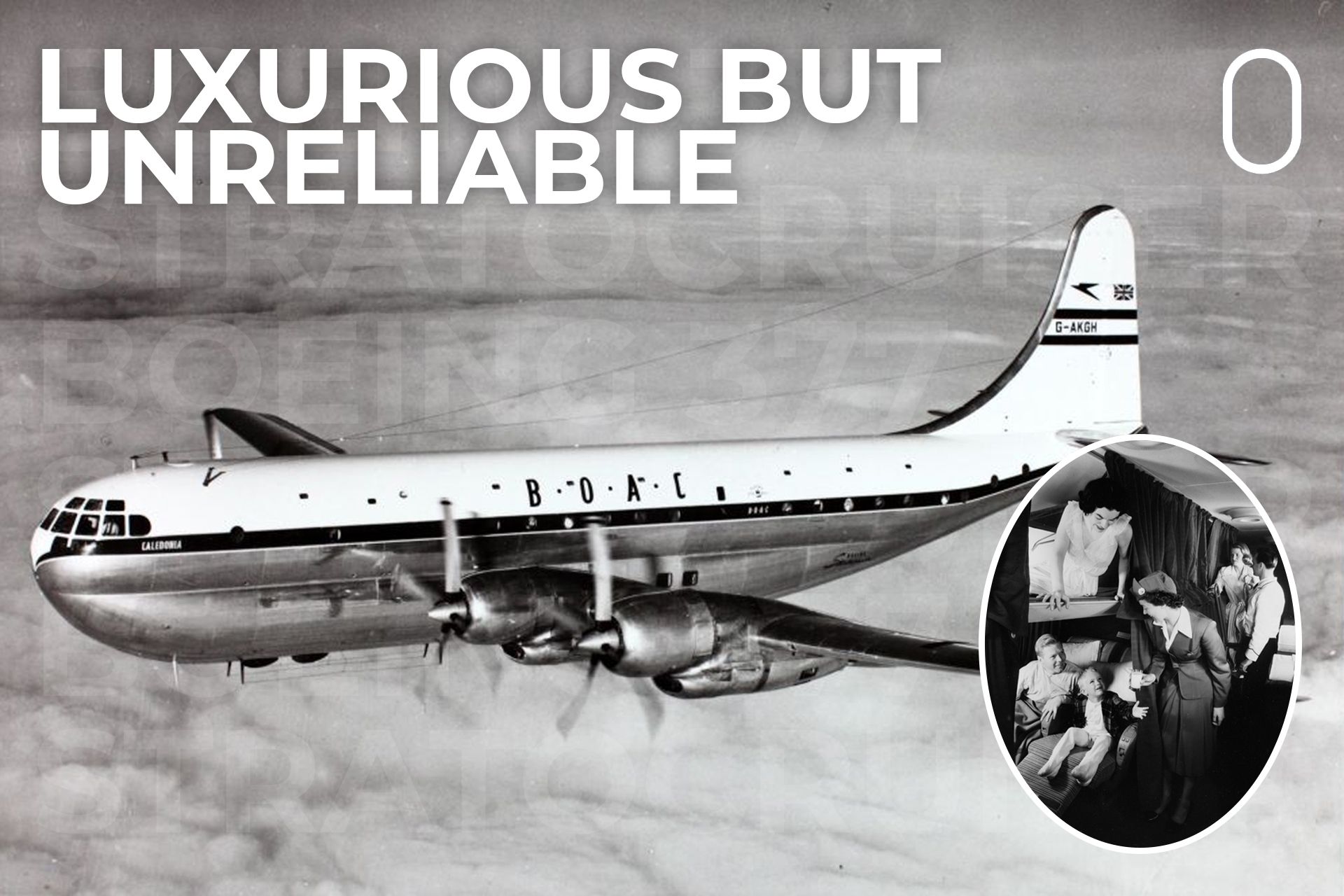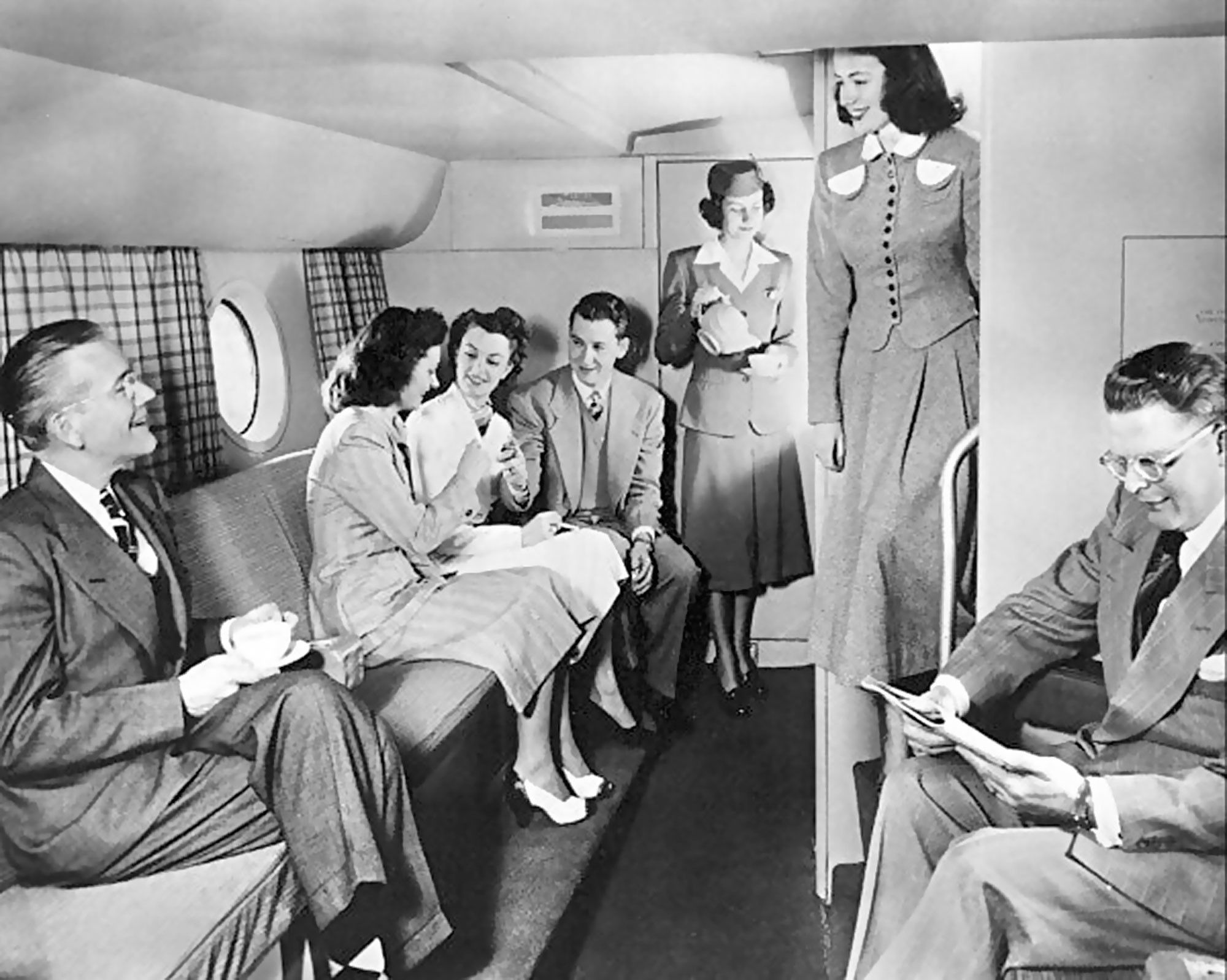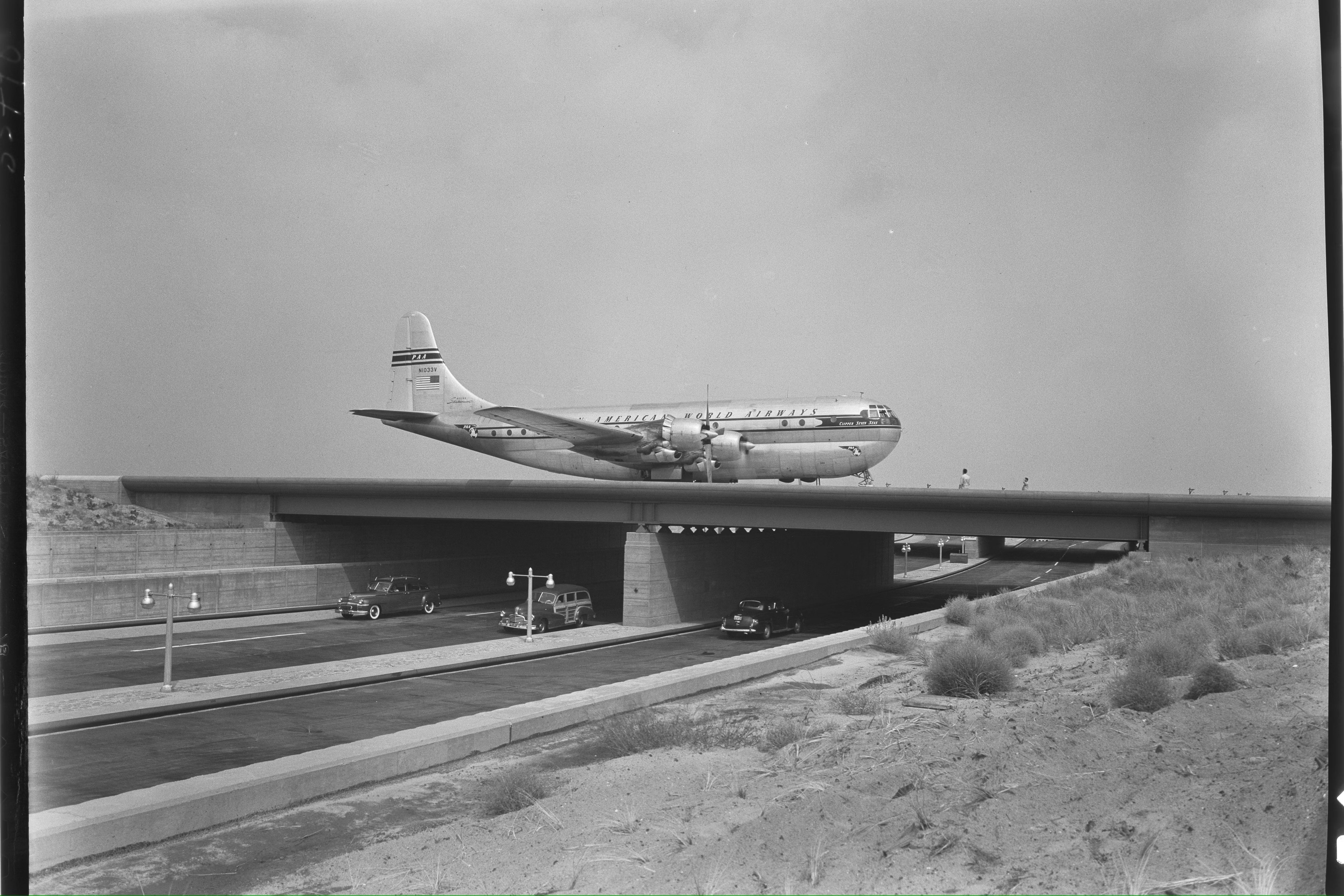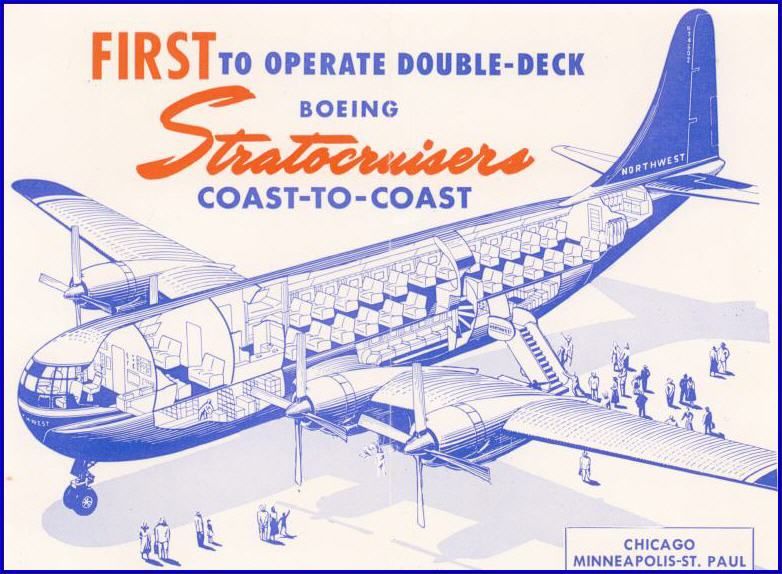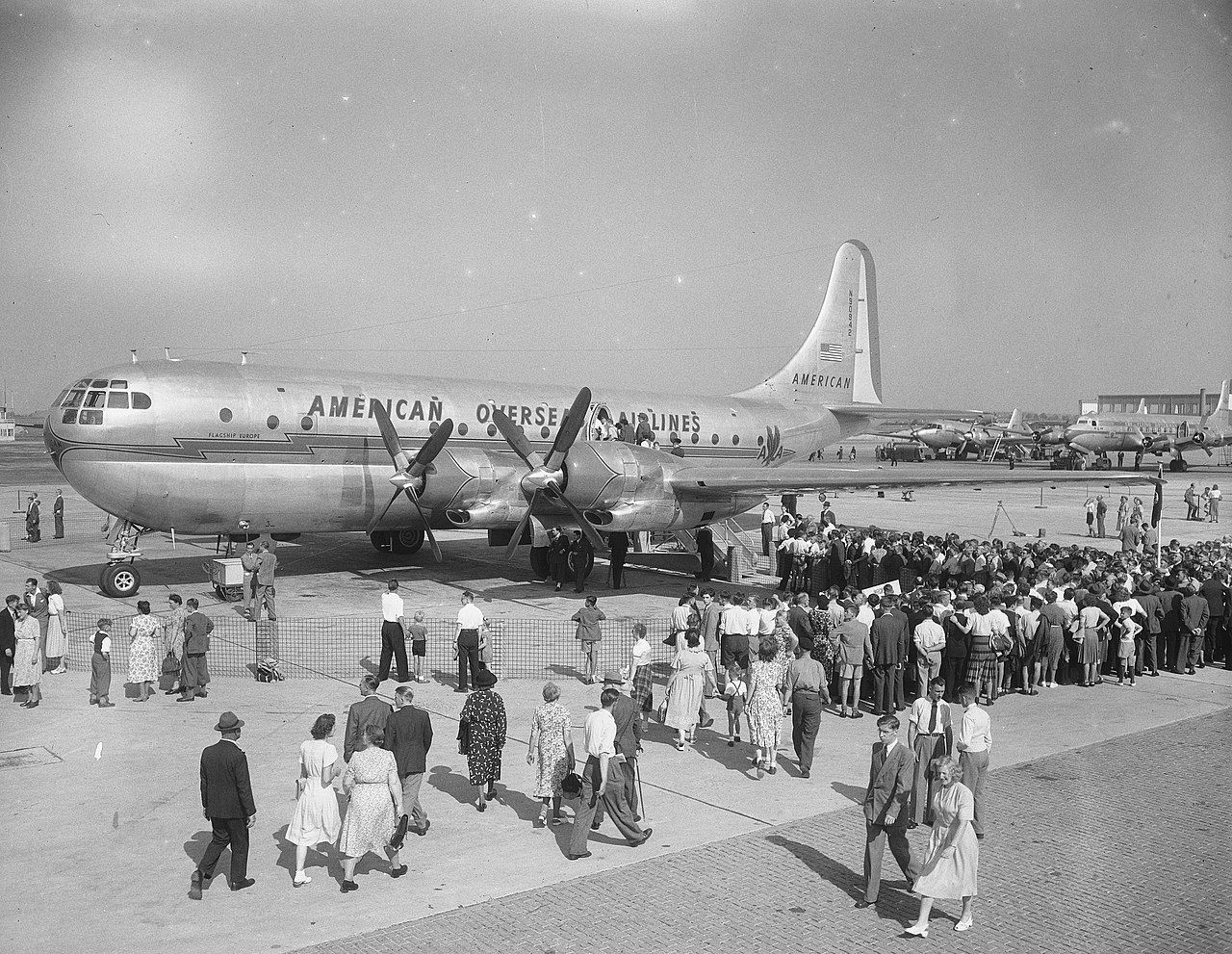Summary
- The Boeing 377 Stratocruiser was unreliable, with operating economics insufficient for profit.
- Despite its luxury design, the 377 had recurring issues with its propellers, leading to fatal incidents.
- The advent of jet aircraft led to the abandonment of the costly-to-operate Stratocruisers.
A groundbreaking aircraft, the spacious and innovative Boeing 377 Stratocruiser promised to change the world of passenger aviation. The long-range airliner performed its first flight in July 1947. The aircraft had a seating capacity of 100 passengers on the main deck, and 14 in the lower deck lounge.
The plane fell far short of its objectives. Despite the manufacturer’s claims, the plane proved unreliable, and its operating economics simply did not allow airlines to turn a profit. The airliner proved so problematic for carriers that Airline Ratings referred to it as a “mechanical nightmare.”
The aircraft was developed to be a long-range luxury passenger airliner, conceived from the C-97 Stratofreighter, and an aircraft that traced its origins back to the B-29 Stratofortress. But designing a passenger airliner out of a nuclear bomber-turned-freighter would be significantly easier said than done. In this article, we will take a closer look at the history of this luxurious aircraft.
Some background
After the Second World War, William Allen became the president of Boeing and had the challenging task of transforming the manufacturer’s business from military to civil aviation. Previously, the company’s international commercial offerings were flying boats, like the popular Boeing 314 Clipper, which flew routes across the globe for Pan American World Airways.
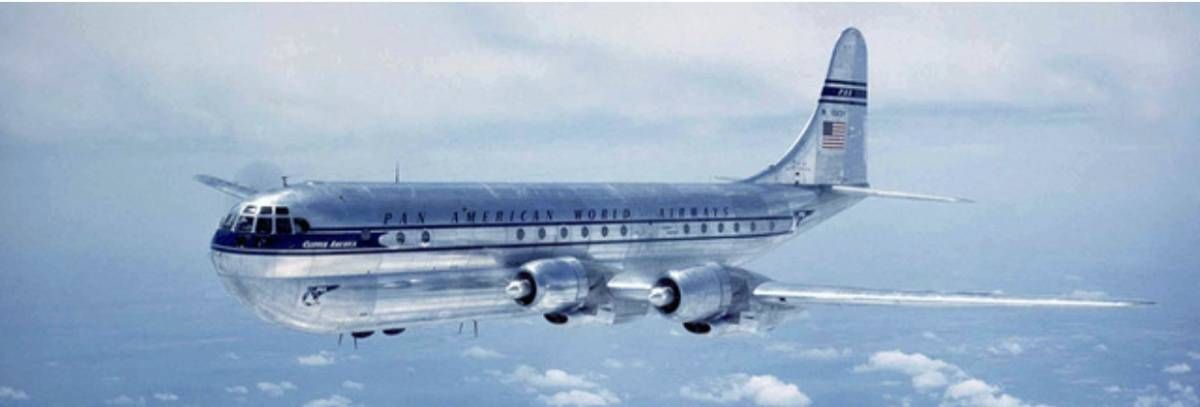
Related
The Boeing 377 Stratocruiser – The Double Deck Plane That Changed The World
But with the mass construction of air bases, long-range operations from land-based airports have become an appealing option. Boeing’s engineers had already proven with aircraft like the B-29 that they could design long-range planes, so building an intercontinental airliner seemed feasible.
Boeing took a gamble
- Length: 110 ft 4 in (33.63 m)
- Wingspan: 141 ft 3 in (43.05 m)
- Height: 38 ft 3 in (11.66 m)
- Max takeoff weight: 148,000 lb (67,132 kg)
- Powerplant: 4x Pratt & Whitney R-4360-B6 Wasp Major 28-cylinder air-cooled radial piston engines
- Power per engine: 3,500 hp (2,600 kW) each
Despite the country facing a depression in late 1945, Allen ordered the company to build 50 Stratocruiser airliners based on the C-97. This was a huge gamble, given that no airline had yet placed an order for such a plane. His hunch proved correct, with Pan Am placing a $24.5 million order, the largest ever order for an aircraft in the history of aviation.
After the success of its Clipper flights, Pan Am President Juan Tripp held Boeing in high regard. When a Boeing C-97 flew non-stop from Seattle to Washington D.C. in six hours and four minutes, he immediately saw the potential of the Stratocruiser.
The Stratocruiser had two decks
Much more significant than the Douglas DC-6, the Stratocruiser boasted two pressurized passenger decks with air-conditioning. The main deck had seating for 100 passengers, while the lower was a combination of berths and seats. As reported by CNN, the aircraft even featured beds within the overhead compartments.
The Stratocruiser program got a boost thanks to a government initiative offered to Northwest Orient Airlines to open new routes to Hawaii and the Pacific Northwest. The routes depended on purchasing Boeing 377 Stratocruisers and using them on mail routes, which they did.
As the launch customer, Pan Am began scheduled Stratocruiser flights from San Francisco to Honolulu in April 1949. Pan Am, BOAC, and American Overseas Airlines were all using Boeing 377s on transatlantic routes by the end of the decade.
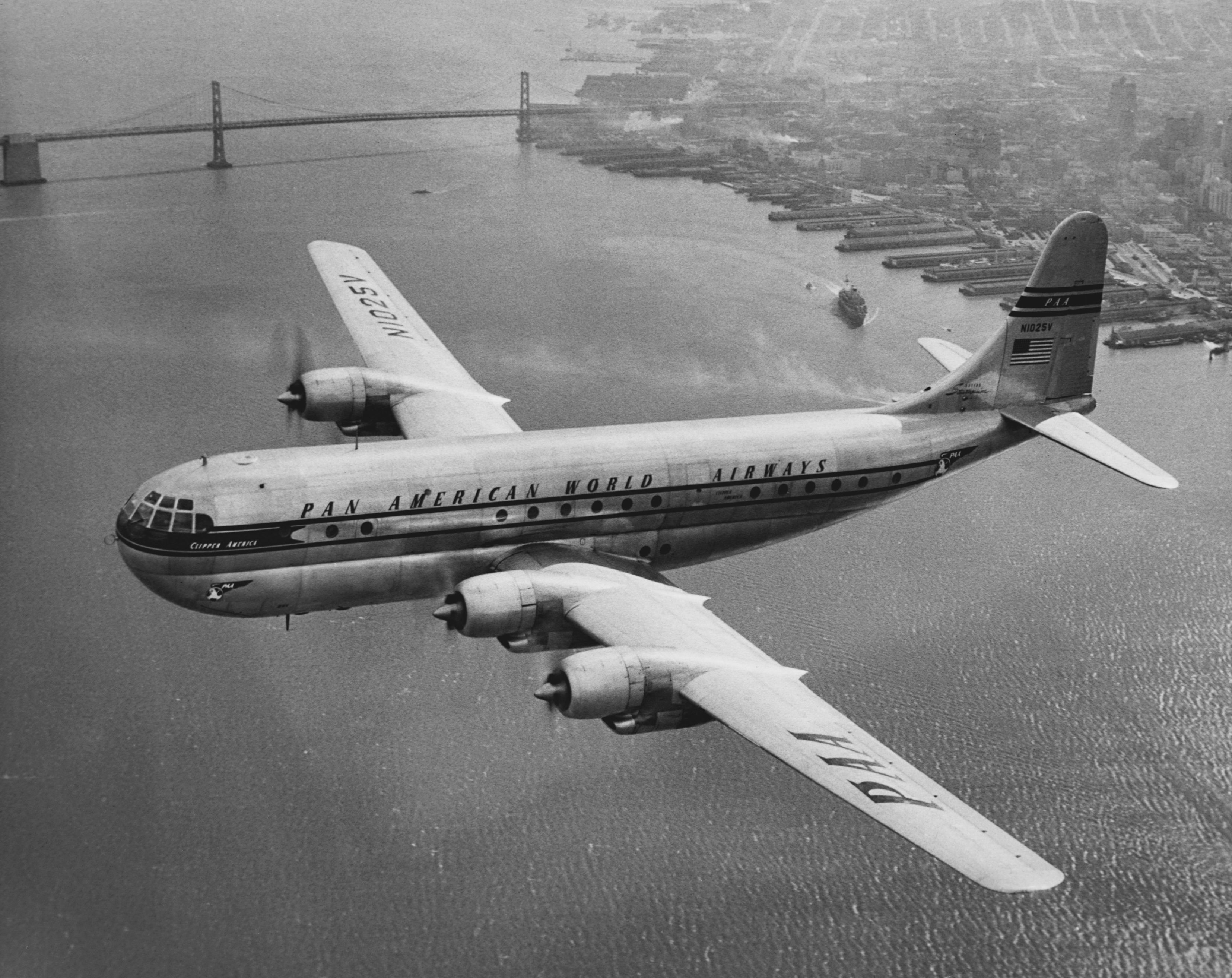
Related
How A Pan Am Boeing 377 Stratocruiser Pulled Off A Fatality-Free Ditching In 1956
The aircraft ditched approximately midway between Hawaii and California.
In January 1950, United began its Stratocruiser service from San Francisco to Honolulu while Northwest Stratocruisers were flying in North America between New York City, Chicago, Detroit, Minneapolis/St. Paul, Milwaukee, Spokane, Seattle, and Honolulu. By 1955, Stratocruisers were the plane of choice flying to nearly all global destinations.
The plane was very thirsty and had propellor problems
- Propellers: 4-bladed constant-speed fully-feathering propellers
- Maximum speed: 375 mph (604 km/h, 326 kn)
- Cruise speed: 301 mph (484 km/h, 262 kn)
- Range: 4,200 mi (6,800 km, 3,600 NM)
- Service ceiling: 32,000 ft (9,800 m)
While the Stratocruiser was undeniably one of the most luxurious and advanced piston-powered airliners of its day, the 377’s operating economics and reliability issues would come to define its legacy. The aircraft suffered a catastrophic failure of the propellors on its four 28-cylinder Pratt & Whitney R-4360 Wasp Major engines, which led to many in-flight emergencies and hull-loss incidents.
The worst incident of many involving the 377 occurred on April 29, 1952, while flying over the Amazon on the third leg of a journey between Buenos Aires and New York. The plane had taken off from Rio de Janeiro for Port of Spain in Trinidad and Tobago when it suddenly disappeared south of the State of Pará, killing all 50 passengers and crew.
Investigators concluded that the second engine separated from the aircraft due to propeller imbalance. With the onset of the jet era in the early 1960s, airlines quickly abandoned the expensive-to-operate Stratocruisers for more modern, faster Boeing 707s and Douglas DC-8 jet airliners. In total, only 56 Boeing 377 Stratocruisers were built during its production run.

Related
Pan Am Flight 202: The Boeing 377’s Deadliest Accident
In 1952, Pan Am Flight 202 crashed in the Amazon jungle killing all passengers and crew.
The aircraft was ultimately a money-loser, both for airlines and manufacturer Boeing, which lost $7 million on the plane. The 377 Stratocruiser would go down in history as one of Boeing’s few major commercial flops.

